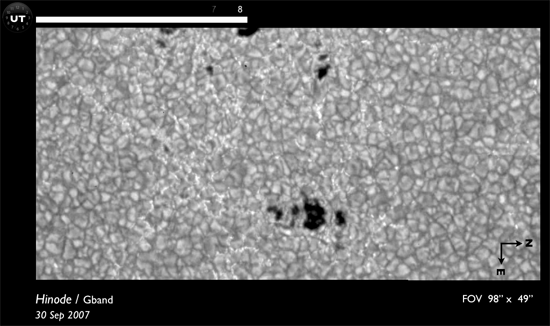Characterization of Horizontal Flows around Solar Pores from High-resolution Time Series of Images
by
S. Vargas Domínguez, A. de Vicente, J.A. Bonet, V. Martínez Pillet
ABSTRACT
Context. Though there is increasing evidence linking the moat flow and the Evershed flow along the penumbral filaments, there is
not a clear consensus regarding the existence of a moat flow around umbral cores and pores, and the debate is still open. Solar pores
appear to be a suitable scenario to test the moat-penumbra relation as evidencing the direct interaction between the umbra and the
convective plasma in the surrounding photosphere, without any intermediate structure in between.
Aims. The present work studies solar pores based on high resolution ground-based and satellite observations.
Methods. Local correlation tracking techniques have been applied to different-duration time series to analyze the horizontal flows
around several solar pores.
Results. Our results establish that the flows calculated from different solar pore observations are coherent among each other and show
the determinant and overall influence of exploding events in the granulation around the pores. We do not find any sign of moat-like
flows surrounding solar pores but a clearly defined region of inflows surrounding them.
Conclusions. The connection between moat flows and flows associated to penumbral filaments is hereby reinforced by this work.
Full paper: Characterization of Horizontal Flows around Solar Pores from High-resolution Time Series of Images
Contact address: jab@iac.es
MOVIE:
30 September 2007
Emerging flux region NOAA 10971 (close to disk center)
Hinode* (SOT/Solar Optical Telescope)
Gband (430.5 nm). Subsonic filtered movie
Time interval: 00:14 to 17:59 UT (~18 hours)
Cadence: 1 min
Field-of-view: ~ 98” x 49”
Pixel scale: 0.054 “/pix
* Hinode is a Japanese mission developed and launched by ISAS/JAXA, with
NAOJ as domestic partner and NASA and STFC (UK) as international partners.
| G-band 430.5 nm (102 Mb) |
 |
| Start/Download movie |